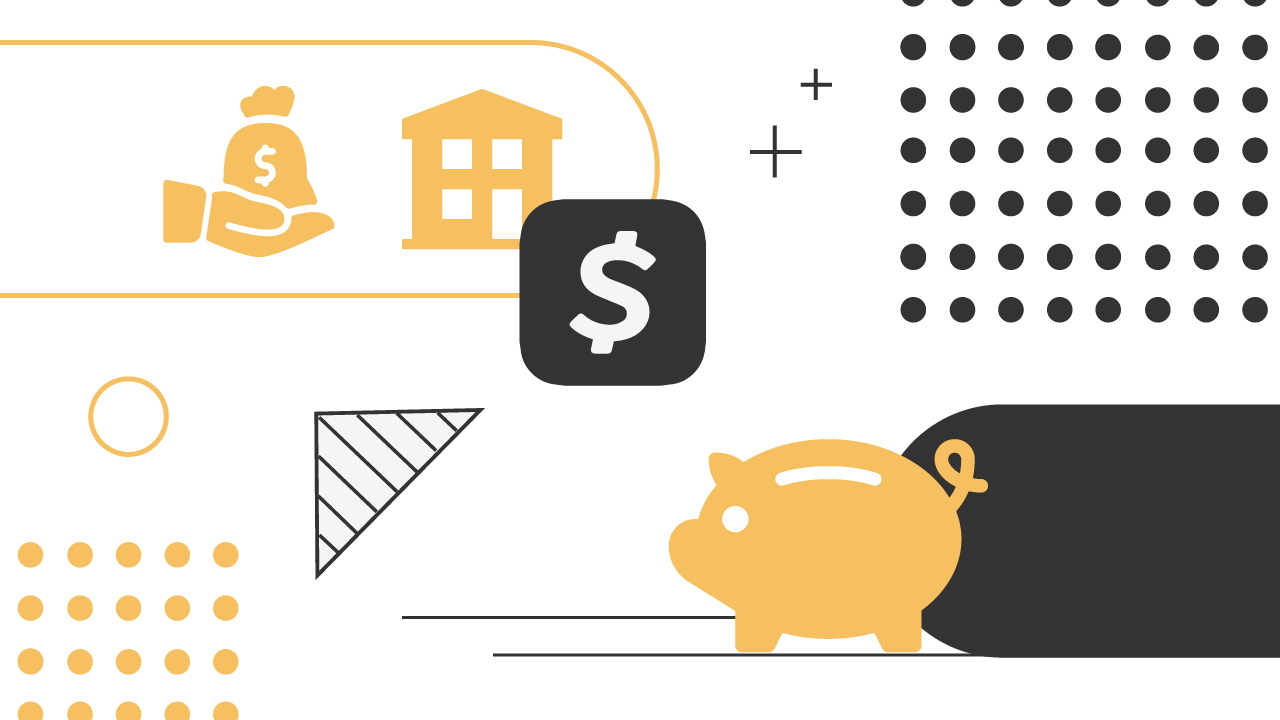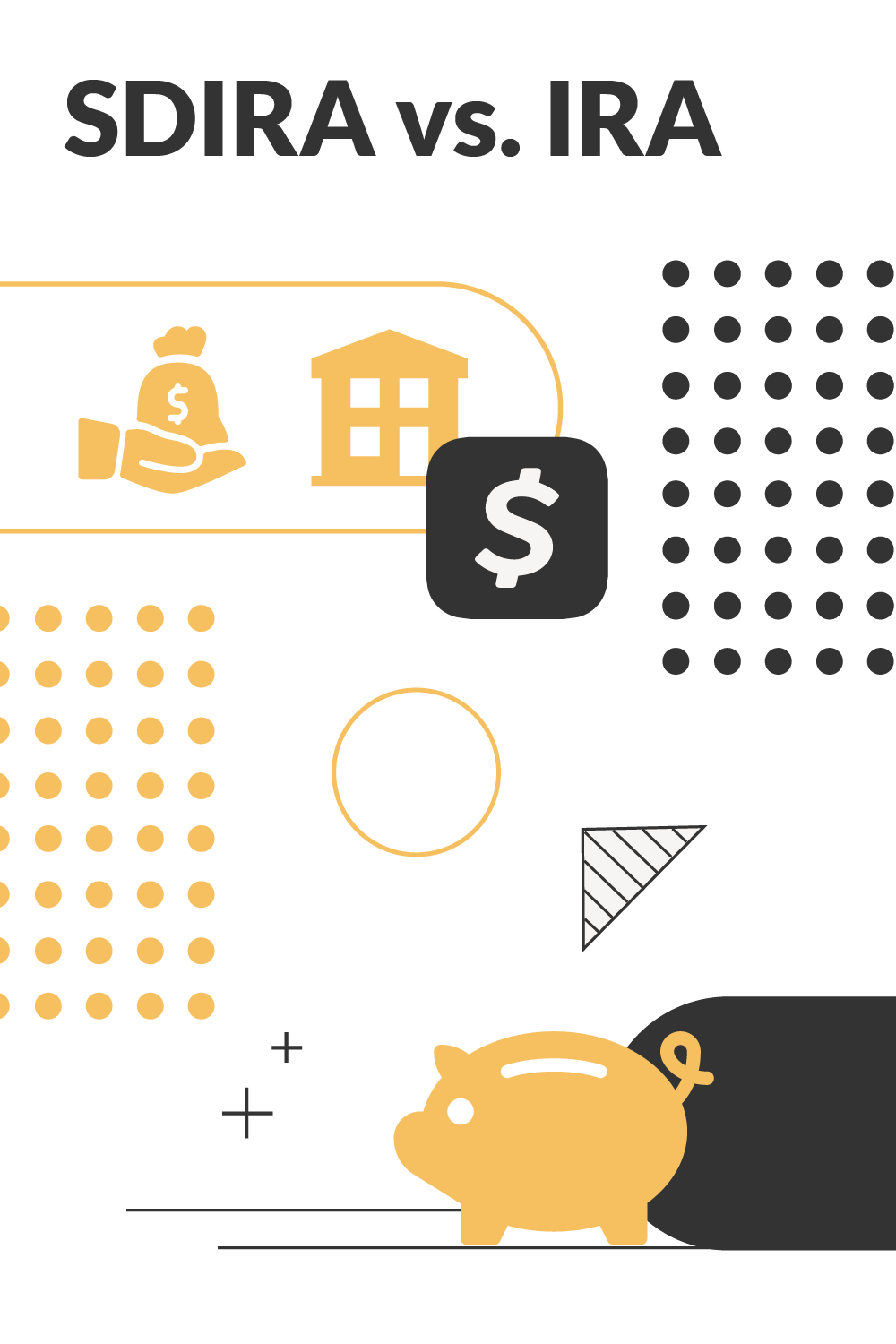
The main difference between a self-directed IRA and a "regular" IRA are the assets you are able to invest in. With a IRA that has a traditional custodian, you are limited to publicly traded assets, such as index funds that the custodian allows.
However, with a self-directed IRA you can invest in just about anything you want to. But self-directed IRAs are more expensive to run and have a lot more rules you'll need to follow. They aren't for everyone.
We explain the differences between typical IRAs (called managed IRAs) and Self-Directed IRAs and when you should choose one over the other.
What Is A Self-Directed IRA (SDIRA)?
A Self-Directed IRA is an individual retirement account that allows you to invest in a wide variety of alternative assets including real estate, privately held stock, cryptocurrency, land, and other assets. If you have an SDIRA, you can invest your money into almost any legal asset.
SDIRA custodian companies hold the assets inside of your account. SDIRA administrators take care of the administrative needs of the account such as reviewing transactions to ensure you don’t run afoul of any laws and preparing account statements. SDIRA administrators may also take care of certain tax filing requirements for you.
For example, they may file a form 5500 on your behalf. This reports on the annual change in assets inside the account. Even when your administrator files this on your behalf, it is up to you to work with a tax professional to understand the tax implications of your investments.
Self-directed IRAs can be either traditional or Roth IRAs.
The traditional version of the account allows you to take a tax deduction when you contribute to the account. Investments within the account grow tax-free, but you will pay ordinary income taxes when you withdraw money from the account. The Roth version offers no upfront tax breaks. However, the assets inside the account grow tax-free, and they are not taxed when you take distributions.
Related: Best Self-Directed IRA Providers
What Is An IRA?
By contrast, the brokerages that support IRAs only allow you to invest in publicly traded assets like stocks, bonds, mutual funds, ETFs, and cash. Many brokerages allow you to open an IRA for free. These companies charge very few fees, and they offer excellent service. But the big brokerages won’t allow you to put private stock or a deed into your IRA.
Like SDIRAs, you can get either a traditional or a Roth IRA and both are subject to the same annual contribution limits.
What The Differences Mean
While an IRA limits you to publicly traded assets, you can invest in just about anything inside of your Self-Directed IRA, but so what?
Well, Peter Thiel famously has a Roth IRA with more than $5 Billion in assets. How is this possible when there are such low annual contribution limits in an IRA?
Thiel’s account started small. He originally contributed just a $2,000 of pre-IPO PayPal stock. When PayPal went public the following year the account grew substantially. He further grew the account through angel investing inside of his IRA.
Thiel’s Roth IRA was no ordinary IRA. He used a self-directed Roth IRA to invest in private stock, an alternative asset that most custodial companies won’t support.
If Thiel had taken the standard financial advice to invest in index funds inside a retirement account, he would not have billions of dollars of tax-free assets today. By leveraging a self-directed IRA, he’s built extraordinary wealth without paying any taxes.
But that doesn’t mean you should do the same thing. Thiel was in the right place at the right time with the PayPal IPO and has extraordinary luck and skill at angel investing. But it illustrates the usefulness of a self directed IRA.
Comparing Costs Between Self-Directed and Managed IRAs
When you open a managed IRA, you will pay no account opening fees, you won’t pay for bookkeeping, and you won’t have to pay to get tax forms each year. You may pay a small trading fee, but our favorite brokerages don’t charge these fees or any other fees.
Compared to a low-fee conventional IRA, Self-Directed IRAs are loaded with fees. RocketDollar, a low-cost leader in the SDIRA space, charges a $360 set-up fee, plus $15 per month for account management.
Different SDIRA custodians have different fee structures. Some charge on a per-investment basis, others charge a share of assets under management, and others charge based on transactions. No matter the fee structure, you can expect to pay hundreds or thousands of dollars each year for your self-directed IRA.
Self-Directed IRAs Complicate Owning Alternatives
Over the past several years, we’ve seen tons of companies start to offer alternative investments to Main Street investors. But you may find that it’s easier (and less costly) to hold your alternative investments outside of your retirement accounts.
There are strict IRS rules around what is allowed to be held inside an IRA and what isn't. For example, collectibles cannot be held inside and IRA. So if you buy gold coins as an investment but the IRS declares them collectibles instead, you'll face penalties. The amount used to buy the coins would be considered a withdrawal from the account and you'd owe penalties on the amount withdrawn.
SDIRA custodian and administration companies help you to stay on the right side of the law when it comes to investing in your account. In general, alternatives should help you diversify your portfolio. They shouldn’t dominate your investment accounts.
Services Offered by SDIRA Custodians and Administrators
SDIRA custodians and administrators historically did a ton of work for self-directed investors. In fact, these companies may have even written checks to pay for toilet repairs at your real estate property. The rise of checkbook IRAs has simplified SDIRA administration. These allow you to pay bills or make transactions on behalf of your investment company.
However, these companies still do a lot of work for you. They do record keeping, review transactions, and ensure that all your transactions are allowed and that your assets are properly titled. Many help you set up an LLC when you first open the account.
These companies will also do some limited tax form preparation for you. They will file Tax Form 5498 which tells the IRS about contributions, distributions, and the fair market value of assets in your account. Fair market value reporting is especially important since you may hold tangible assets that are difficult to value. Your SDIRA administrator will also send you a Tax Form 1099-R if you take distributions during the tax year.
Some SDIRAs, those that invest in active real estate (such as real estate development) or those that use debt have to file a 990-T which is for unrelated business income tax. The SDIRA administrator will prepare and file this form for your IRA.
Even with all this help, you may need to enlist the help of a financial expert to ensure you fully understand the tax implications of your investments.
Who Should Choose a Self-Directed IRA?
Given the substantial costs, it’s hard to imagine that many regular people should open an SDIRA. It makes sense to consider a Self-Directed IRA when you have a good chance to see massive growth in an investment.
If you own stock in a company that may go public, you may want to put that stock in a Self-Directed Roth IRA. If you want to use your IRA funds to buy a large piece of commercial real estate, a Self-Directed IRA is the way to go.
But before you dive into an SDIRA, make sure you’re being realistic about the risks of your investments. Most people aren’t real estate moguls, tech geniuses, or art connoisseurs. Your investments may go sideways, and you still need to have a secure retirement. Consider the downsides before you double down on risky investments.

Hannah is a wife, mom, and described personal finance geek. She excels with spreadsheets (and puns)! She regularly explores in-depth financial topics and enjoys looking at the latest tools and trends with money.
Reviewed by: Ashley Barnett
